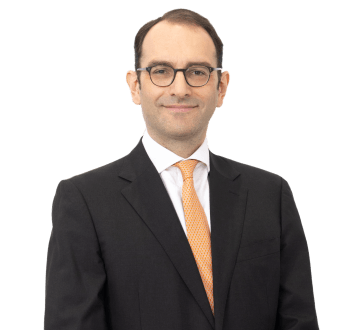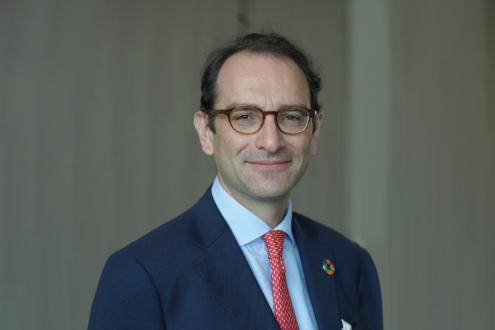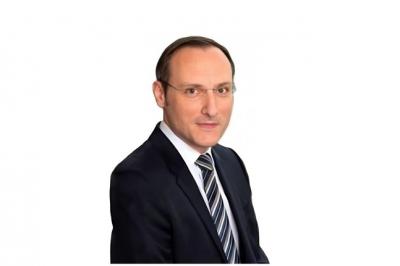Diversified Alternatives: Truly Differentiated Returns for a Changing World

Andrew Hendry of Janus Henderson Investors
Sep 25, 2022
The negative correlation between stocks and bonds came unhitched in 2022, making redundant the traditional 60/40 approach to portfolio diversification. In this Q&A, Andrew Hendry, Head of Distribution, Asia, at Janus Henderson Investors, explains why a portfolio of lowly correlated alternative return drivers might offer the diversification sorely missing in today’s climate.
Coming out of a period of lenient monetary policy, central banks are hiking interest rates to catch up. What are your views on investing in the current environment?
We are in uncharted waters today. The world is different, and this is a time to reset many assumptions on investing. Since the turn of this century, the correlation between bonds and equities has been negative, meaning that they would move in opposite directions. A typical 60/40 bond-equity portfolio had been self-stabilising because of that negative correlation. Bond yields then were high enough to create capital gains that would stabilise the portfolio during a crisis.
In inflationary times, however, the tendency is for the correlation to be positive between bond prices and equity prices, meaning they now move in the same direction. As such, your traditional stocks and bonds portfolio is unlikely to look the same as it did before. One may need to inject other assets to stabilise that portfolio. This is where alternative strategies come into the picture.
What are diversified alternatives? How can they help?
At the very essence of investing, there exists only debt and equity, with everything else being derivatives of the two. In this context, private equity is equity and private credit is debt, albeit with subtle differences. For example, in private equity there’s much higher leverage and capacity for the sponsor to create positive operational change in the portfolio companies, but there are high fees as well. This makes diversification more complicated.
One way around this is by taking different sorts of equity and then running them long-short and market neutral. This creates something that should have less beta. This is the principle behind a hedge fund which should, in theory, take out the exposures associated with those core building blocks.
This may consist of a set of different forms of crisis alpha approaches- volatility strategies or trend-following, for example, may have a reverse polarity with regards to risk. They may perform well in a risk-off environment when the traditional approach to diversification falls apart. This is potentially more reliable than relying on traditional 60/40 diversification alone.
Within diversified alternatives, which strategies have tended to perform best in periods of rising rates and high inflation?
Trend- following (or CTA) is a strategy that’s historically done well in an inflationary environment. It is one of the components of the protection sleeve utilised by our diversified alternatives team. Trend-following works on the idea that markets process information inefficiently and at different speeds, and markets that move in one direction to start with, are more likely to continue to move in that direction. This strategy has had a great 2022 with things like strong commodity prices and weak bonds contributing substantially to performance.
Conversely, which alternative strategies have tended to trail during the same period?
The long volatility strategy that is a component in the protection sleeve of the diversified alternatives portfolio has had perhaps unexpected results this year, given the overall large sell-off we’ve had in risk assets.
You would think that with markets down and investors fearful, volatility would do well, but it's been a very controlled sell-off, without the large dips that characterised periods like Q1 2020, where volatility strategies did well. It's been far more controlled. This has made it harder to take advantage of the volatility, but that is the advantage of having a multi-faceted approach to protection – different strategies work well in different market environments.
Where are the opportunities in the alternatives space today?
We believe there are interesting opportunities in the more liquid areas of the market. The ability to turn an asset into cash is valuable. Difficulties in valuation, where the value of the asset is uncertain because of the absence of the traded market, is detrimental. We don’t subscribe to the idea that you stabilise a portfolio’s volatility by not actively marking it to market. Care needs to be taken with illiquid assets.
We think the opportunity on the liquid side is to build with a range of different, uncorrelated strategies. When a portfolio is lacking diversification because the correlation of some of the key elements of it is going up, then you want to find strategies that are diversified. It’s a challenge, but I think it’s rewarding in terms of the outcome that it produces for investors.
How would one implement these protection strategies? Is it something that that should be on all the time?
In our diversified alternatives portfolios, we are trying to stabilise the alpha that we’re delivering to a client when we build protection. That’s a different function from a pure, tail-risk portfolio, for example, where the portfolio is designed to protect a wider asset base.
In the same way that hurricane insurance is at its most expensive just after the hurricane comes through, the same is true of the underlying options within the long volatility component of our protection strategy. They were mercifully cheap in 2019 and the team were able to build positions cheaply at that point. This was not the case in the second quarter of 2020, when the market equilibrium changed. At that point, it had gotten more expensive. The risks were front-of-mind, and the team down-weighted our exposure to volatility in favour of other strategies.
So back to the question on whether protection should be on all the time, it really depends on the portfolio being run, but it’s important to consider that protection is generally more expensive after a crisis.

CEO Singapore and Head of Distribution, Asia at Janus Henderson Investors

More from Andrew Hendry, Janus Henderson Investors
Latest Articles






